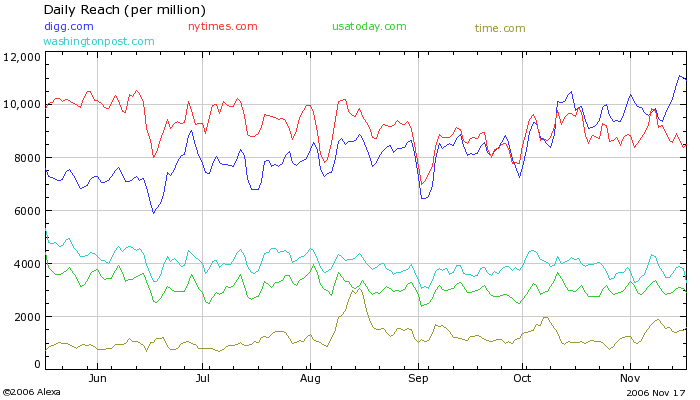By Paul Gillin
The near-total
collapse of the American newspaper industry as we know it is inevitable.
Anything newspapers could have done to stop it should have been done
years ago. (Slate
recently wrote that newspapers saw this coming in
the mid-'70s.) All the social, demographic and economic trends are lined
up against the industry. Over the next decade, there will be agonizing
rounds of layoffs, consolidation and bankruptcies. It will be painful to
watch, but it will be a necessary process for the industry to reinvent
itself.
In this essay,
Iíll outline the reasons I believe this and propose a new and very
different model of publishing and journalism that will take hold as this
cycle plays out. This will be a very exciting evolution, but it will be
very painful, too.
A
broken business model
First, some
background and assumptions. The business model of metropolitan daily
newspapers was developed over 150 years ago to support a delivery method
that is becoming irrelevant. Huge staffs of people were needed to create
content, turn it into type, print it on paper and distribute it on a
timely basis. It was very expensive, but it was necessary because there
was no alternative way to deliver information on a daily basis.
Large editorial
staffs were needed to create proprietary content. A few alternate
sources of content were available, such as news wires, but there was
almost nothing at the local level. In any case, running wire copy
didnít differentiate a newspaper from its competition, so staffs of
salaried reporters were needed to turn up original news. At some
newspapers, these staffs could run to several hundred people.
Newspapers had
to maintain large circulation operations and massive subscriber lists in
order to justify their ad rates. Circulation is expensive. While renewal
rates for daily papers have always been high, itís costly to acquire
new subscribers through advertising and direct mail. For most papers,
the cost of circulation didnít come close to matching the small
revenue it generated. Circulation revenue at newspapers has also been
falling in recent years due to price cuts and competition, further
squeezing margins.
Capital costs
inherent in buildings, presses, paper, ink and people to run all those
machines were astronomical. Labor unions added to those costs. In some
cases, the unions have succeeded in preserving jobs that were automated
out of existence years ago. People go to work and literally have nothing
to do.
Add it all up
and a metropolitan daily newspaper must employ several hundred people to
produce the product. Newspaper advertising is very expensive because of
the large fixed costs. The Chicago
Tribune, for example, charges $755 per column inch in the daily
paper ($1,135 on Sunday). That business works as long as advertisers are
willing to pay for it and for many years they have. Thatís because
newspapers were one of the most effective means for businesses to reach
consumers in certain geographies.
The upside,
though, is that newspaper model has traditionally been profitable and
predictable. Once a newspaper achieved dominance in its market, it was
practically unassailable. As consolidation reduced the total number of
daily newspapers (there are about 1,500 in the U.S. today), competitive
pressure eased and the winning papers were able to drive their ad rates
higher. Until the mid-1990s, this was a pretty nice state of affairs.
Even the Internet didnít put much pressure on newspapers, at least
during its first decade.
That is all
about to come to an end. The business model of metropolitan daily
newspapers is poised for a collapse that will be stunning in its speed
and scope. The cause is Web 2.0 and the vastly superior economics of
that emerging business.
A
new model
A recent story
in Business 2.0 magazine
revealed the income of some popular bloggers. Read this article if you
want to understand the emerging economics of blogosphere. This new
medium is far more cost-efficient than the ones it will replace.
ďBlogs today
benefit from what might be termed uneconomies of scale,Ē the Business
2.0 article says. ďThey are so cheap to create and operate
that a lone blogger or a small team can, with the ever-expanding reach
of the Internet, amass vast audiences and generate levels of profit on a
per-employee basis that traditional media companies can only fantasize
about.Ē
Take the Fark.com
example. The site generates 40 million page views a month with a staff
of one full-time person and two contractors. Its only real operating
costs are bandwidth charges. It produces almost no original content and
has no capital costs. Members contribute their own content, so no
editors are needed. The site almost runs itself. Yet this could approach
$10 million in revenue before long.
Another example
is Craigslist.org. Itís is
the fifth most popular site on the Internet, with global reach and an
estimated four billion page
views a month. It is absolutely killing the newspaper classified ad
business. One study report estimated that Craigslist costs San Francisco
newspapers $50 million in revenue each year. The entire staff is 23
people, all part-time. Google
Blogoscoped, which is the best independent source of information
about Google, is run by one person in his spare time. Itís averaging
four million page views a month. Gizmodo
grew to become one of the top five blogs on the Internet with only a
single contributor. Digg.com, which
is barely two years old, is already among the top 25 sites on the Web.
Its traffic outstrips all the largest media sites. It has a staff of 15.

Digg.com, with
less than 20 employees, has more Web traffic than The New York Times, according to Alexa.com. Other popular
mainstream publications are even farther behind.
Next Page
Download
this article (PDF)
|

